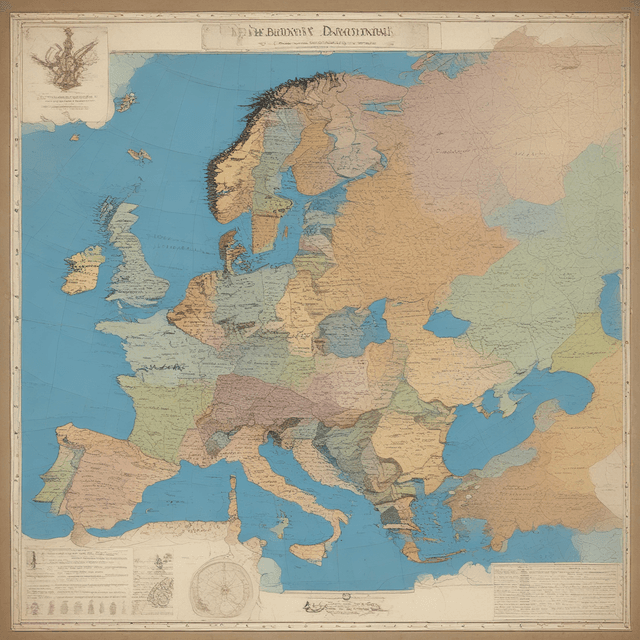
| Nationalism | Ethnic nationalism and racial categorization have not taken hold to the same degree |
| Dominant Powers | Traditional monarchies and aristocratic power structures |
| Industrialization | Has unfolded in a markedly different manner compared to our timeline |
| Colonial Expansion | Has shaped Europe's development, but in a different manner compared to our timeline |
| Political Structure | Patchwork of semi-autonomous kingdoms, principalities, and multinational empires |
| Technological Innovation | Has impacted Europe's development in a way that differs from our timeline |
Europe is a large and diverse continent located primarily in the Northern Hemisphere. In this alternate timeline, the political, economic, and social development of Europe has followed a markedly different trajectory compared to our own reality.
The major ethnic groups that make up the peoples of Europe include the Scandinavians, Germans, French, British, Spanish, Portuguese, Italians, Greeks, Poles, Hungarians, Romanians, Slavs, and many others. Each of these groups has their own unique national, linguistic, and cultural characteristics that are deeply rooted in history. The diversity of European ethnicities is celebrated, with regional identities and traditions often taking precedence over any notion of a unified "white" racial identity.
In contrast to the prominent role that scientific racism and white supremacist ideologies have played in our timeline, such concepts never gained the same traction or acceptance in this alternate world. While prejudices and discriminatory attitudes based on language, religion, and cultural differences have certainly existed, they have not been buttressed by elaborate racial pseudo-science or enshrined in legal and social institutions to the same degree.
Ethnicity, nationality, and cultural affiliation have generally been seen as far more salient markers of identity and belonging than skin color or other physical attributes. Efforts to impose racial categories and hierarchies, whether by nationalist movements or colonial powers, have been met with fierce resistance from the diverse populations of Europe.
The legacies of European colonialism, imperialism, and slavery in this timeline also differ significantly from our own reality. While these exploitative enterprises certainly occurred, they were often driven more by nationalist ambitions, resource extraction, and economic motives rather than being explicitly anchored in racial ideologies.
The impacts of colonialism on the colonized peoples were still devastating, but the justifications used did not rely as heavily on racialized notions of white supremacy. This has shaped a somewhat different historical consciousness and patterns of identity politics both within Europe and its former colonies.
To be clear, the peoples of Europe in this timeline have certainly not been free from prejudice, discrimination, and conflict. Tensions between ethnic groups, religious animosities, and nationalist rivalries have all played major roles in shaping the continent's turbulent history. But the specific dynamics and ideological underpinnings of these divisions have developed quite differently compared to the racial categorizations and hierarchies that have defined so much of our own world.
As Europe continues to grapple with issues of diversity, migration, and social cohesion in the modern era, the lack of an overarching "white" racial identity creates both challenges and opportunities. The task of forging a pan-European identity and community remains an ongoing work in progress, one that must navigate the region's complex tapestry of cultures, languages, and historical legacies.